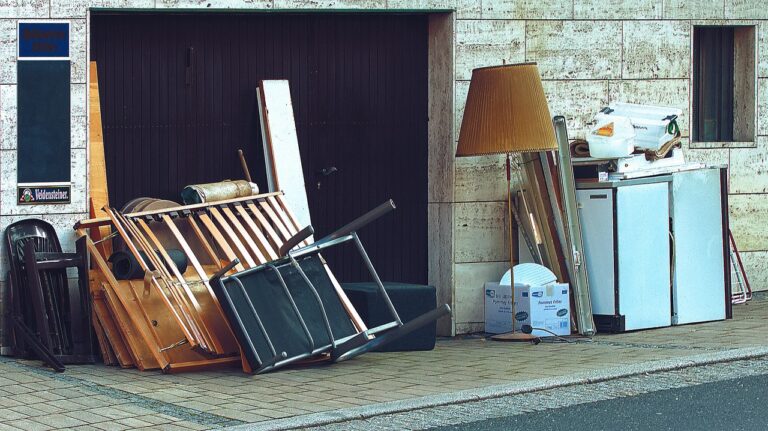Home renovations are a fantastic way to enhance your living space and boost property value, but one crucial part of the process often gets overlooked—furniture removal. Whether you’re doing a full remodel or renovating just one room, failing to remove furniture properly can delay progress, risk damage to your belongings, and create unnecessary stress. Planning ahead for furniture removal, especially for old furniture removal, can make your entire project smoother and safer.
Why You Must Prioritize Furniture Removal During Renovation?
When contractors arrive, they need a clear, obstruction-free workspace. Cluttered rooms filled with large sofas, cabinets, and tables slow down progress and can even pose safety risks. Heavy or bulky items are prone to damage during construction. Dust, paint splatters, or accidental scrapes from tools are common in active work zones.
A well-thought-out furniture removal plan eliminates these problems. It gives renovation teams the freedom to work efficiently while protecting your valuable possessions. This is especially important when dealing with old furniture that may already be fragile or worn. Instead of leaving it in the way, arranging old furniture removal beforehand ensures it’s either relocated, stored, or responsibly discarded.

Should You Do It Yourself or Hire a Junk Removal Contractor?
Homeowners often consider moving furniture on their own to save money. While this may work for smaller pieces, it’s not ideal for large or heavy items. Lack of experience can lead to injuries or property damage. That’s where hiring a junk removal contractor becomes invaluable.
A reliable contractor brings the tools, labor, and expertise to remove furniture quickly and safely. They also understand how to handle tight doorways, stairs, or delicate flooring. Whether it’s relocating your furniture to a storage facility or hauling away pieces for donation or disposal, a junk removal expert can take care of everything with minimal disruption.
In addition to old couches and chairs, a junk removal contractor can help with other renovation-related cleanup tasks, including scrap metal clean up, discarded appliances, and leftover materials. This service is especially beneficial when your remodel includes new fixtures or built-ins that replace older, metal-based items like lighting, shelving, or outdated plumbing.
The Importance of Scheduling Furniture Removal in Advance
Timing is everything in a home renovation. Furniture should be removed several days before your contractors begin work. Waiting until the last minute can cause project delays, rushed decisions, and even damage during hurried moving.
Coordinate with your junk removal contractor early on to set removal and, if needed, storage dates. If you’re renovating in phases, plan the furniture removal accordingly to maintain a smooth workflow in each section of the house. Many contractors prefer working in cleared spaces, and respecting that helps maintain a professional and efficient renovation environment.
Don’t Forget to Protect Your Furniture in Storage
If you’re not disposing of furniture, be sure to protect anything you’re storing temporarily. Items stored in garages or other rooms during a renovation can still collect dust, absorb odors, or suffer accidental damage.
Use plastic wrap, furniture pads, or moving blankets to protect upholstery and wood finishes. If your project involves tearing down walls or floors, don’t store furniture in adjacent rooms unless absolutely necessary. Hiring a removal service that offers temporary storage may be the most convenient option to keep your items safe and organized.
Taking photographs before removal and labeling each item will also help when it’s time to bring everything back. This level of planning saves time during reinstallation and ensures nothing gets misplaced or damaged in the process.
Supporting a Safer Worksite for Everyone
Removing furniture from work zones creates a safer environment not only for contractors but also for your family. Construction sites involve cords, tools, sharp materials, and dust—all of which pose risks when furniture is left in the way.
Hallways and stairs especially should remain clear. If your renovation involves removing built-in furniture or cabinets with metal hardware, you may also need scrap metal clean up. Leaving loose materials or scrap behind can create hazardous obstacles that may result in injuries or slow progress.
Contractors are responsible for the work, not for moving or protecting your furniture. That’s why taking this responsibility seriously—by hiring a junk removal contractor—can make the job easier for everyone involved and show that you value a professional, well-managed renovation.
The Long-Term Benefits of Planning Furniture Removal
Homeowners who plan for old furniture removal and temporary storage reduce stress and speed up the renovation process. Once the project is complete, reinstalling furniture into a clean, ready-to-use space becomes much easier.
Proper planning and working with trusted pros not only prevent unexpected costs but also contribute to the overall success of the remodel. Whether you’re dealing with furniture, debris, or scrap metal clean up, having a clear plan shows you’re organized and invested in quality results.
FAQ
Can I donate old furniture instead of throwing it away during renovation?
Yes, many junk removal contractors offer donation drop-offs for gently used furniture. If your old pieces are still in good shape, donating them is a great way to declutter and support local charities. Just be sure to schedule pickup before renovation begins to avoid delays.
What is scrap metal clean up, and do I need it during my renovation?
Scrap metal clean up involves collecting and safely removing metal debris like old pipes, fixtures, or hardware. If your renovation involves tearing out metal components, this service is essential to prevent safety hazards and keep your workspace clean.

